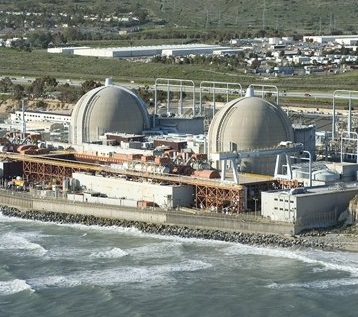California's $4 billion SONGS project set to test decom efficiency gains
The EnergySolutions-AECOM contractor partnership can use time-saving learnings from earlier projects like Zion in Illinois to help boost confidence in cost forecasts and new build assumptions, industry experts said.

Related Articles
In December, SONGS Decommissioning Solutions, a joint venture between EnergySolutions and AECOM, won the contract to decommission Southern California Edison’s (SCE’s) SONGS nuclear power plant in California.
The estimated cost of the decommissioning project is $4.4 billion and this covers dismantling, spent fuel management, radiological decommissioning and restoration of the site within 20 years.
The site houses three reactors. In June 2013, SCE announced it would retire the 1.1 GW San Onofre Units 2 and 3 earlier than planned and began the preparations to decommission the facility. The 436 MW Unit 1 was shut down in 1992 and placed in SAFSTOR until the shut down of Units 2 and 3.
The reactors are situated on an 84-acre site, under a lease agreement with the U.S. Department of the Navy which is due to expire in 2024.
The decommissioning of SONGS represents "one of the largest and most technically complex projects in the country," Michael S. Burke, AECOM CEO, said in a company statement.
SCE expects dismantling to take around 10 years and the major dismantling is not scheduled to start until 2018 at the earliest, when state regulators are expected to complete an environmental review required under the California Environmental Quality Act.
EnergySolutions will bring experience gained on ongoing U.S. decommissioning projects. The company currently operates 50% of active commercial decommissioning sites and it recently announced its $1 billion Zion decommissioning project is on budget and “several years” ahead of the original ten-year schedule.
The successful delivery of the SONGS decommissioning project would further build confidence in decommissioning cost estimates and practices.
A well-managed project would also support future investments in nuclear new build projects as investors are scrutinising the unfolding contractual and regulatory arrangements for decommissioning, Bruce Lacy, president of Lacy Consulting Group LLC, told Nuclear Energy Insider.
“The industry can show that decommissioning is not a problem, that it’s manageable. In 15 years we can have a track record of success that will support [Nuclear New Build], with SONGS as part of that track record,” he said.
Faster projects
EnergySolutions will draw experience from a number of decommissioning projects which include Exelon’s Zion plant in Illinois and Dairyland Power Cooperative’s La Crosse reactor in Wisconsin.
Growing project experience is improving efficiency and shortening dismantling and decontamination timelines, John Sauger, Executive Vice President and CNO, EnergySolutions, told the 2016 Nuclear Decommissioning & Used Fuel Strategy Summit in October.
"Our new schedules based on Zion [plant decommissioning project] are six and a half to seven years to tear down the plant, from start to finish," he said.
SCE’s decision to ‘immediately’ decommission the SONGS plant bucks the general trend in the U.S.
Low wholesale prices have accelerated closure plans and many operators have deferred decommissioning and chosen SAFSTOR as they are yet to accumulate sufficient decommissioning trust funds (DTFs) to cover the high upfront costs.
SCE chose the DECON method of 'immediate' decommissioning in 2014, after accumulating a substantial DTF of some $4.1 billion. SCE estimates some $2.1 billion will be spent on license termination, $1.7 billion on spent fuel management and $1.0 billion on site restoration.
An assessment of regulatory risk also supported the DECON option, Jim Madigan, CNO Technical Advisor and Director of Oversight, Regulatory Affairs & Nuclear Safety Culture, Southern California Edison (SCE), said at the decommissioning summit in October.
The SONGS plant is located on federal land owned by the U.S. Navy and the SAFSTOR option was expected to present more environmental challenges from state and federal-level regulators, Madigan said.
"Looking at all the challenges, it made sense for us to fully engage in decommissioning right off the bat," he said.
Local challenges
Decommissioning contractors must put in place contingency plans for site-specific challenges.
EnergySolutions' ownership of low level radioactive waste (LLRW) repositories gives the company greater financial flexibility to manage uncertainties, Thomas Magette, Nuclear Managing Director Capital Projects and Infrastructure at PwC, told Nuclear Energy Insider.
“No two plants in the U.S. are identical and there is always a level of uncertainty, especially estimating waste volumes, but having its own waste sites gives EnergySolutions an advantage at Zion and LaCrosse,” he said.
EnergySolutions is executing the Zion and Lacrosse decommissioning projects through a license stewardship arrangement whereby it assumes the assets and liabilities of the plant until project completion.
For the SONGS project, SCE will maintain "strict oversight of the contractor and will continue to engage with the community and all stakeholders during decommissioning," Ron Nichols, SCE president, said in a statement.
SCE established a Community Engagement Panel (CEP) for the project, represented by a diverse range of local groups and organisations. This panel improved communication channels with local stakeholders and supported communications with federal and state government officials, Madigan said in October.
“I think that gave the CEP a little bit more credibility than just the utility standing up and talking about what we’re going to do and why it’s the right thing to do,” he said.
SCE will need to maintain efficient communications with regulators as SONGS undergoes the environmental review ahead of major dismantling work.
By Karen Thomas
